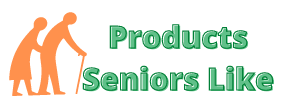When it comes to the health of elderly individuals, monitoring key factors such as blood pressure is crucial. But what blood pressure is too low for elderly patients? This is a question that frequently arises as caregivers and relatives strive to ensure the wellness of their loved ones.
Blood pressure, a measure of the force exerted by circulating blood on the walls of blood vessels, is a vital indicator of cardiovascular health. For seniors, understanding the implications of low blood pressure, or hypotension, is essential in maintaining their overall well-being and preventing potential health complications.

What is Blood Pressure?
Blood pressure consists of two measurements: systolic and diastolic. The systolic measurement represents the pressure in the arteries when the heart beats, whereas the diastolic measurement reflects the pressure when the heart rests between beats. A typical reading is expressed as systolic over diastolic, for example, 120/80 mmHg.
Defining Low Blood Pressure in Elderly
Generally, blood pressure readings lower than 90/60 mmHg are considered low. However, the definition of low blood pressure for elderly individuals may vary, especially considering personal medical history and current medications.
Symptoms of Low Blood Pressure
Hypotension symptoms can include dizziness, fainting, blurred vision, and confusion. If an elderly person experiences these symptoms, it’s imperative to address them promptly, as they can lead to falls or other injuries.
Causes of Low Blood Pressure in Seniors
Several factors may contribute to hypotension in the elderly, including dehydration, heart problems, endocrine disorders, and nutritional deficiencies. Certain medications like diuretics or medications used for treating high blood pressure can also cause low blood pressure readings.
Read more about elder care methods.
The Role of Medications
It’s not uncommon for older adults to take multiple medications, some of which may inadvertently lower blood pressure. It’s important to consult healthcare providers if medication-induced hypotension is suspected.
Monitoring Blood Pressure at Home
Regular monitoring of blood pressure at home is a practical approach to managing health. Devices such as digital blood pressure monitors can provide accurate readings and help identify trends that could impact treatment plans.
Care for skin issues can also be managed alongside other health factors.
When to Seek Medical Advice
If an elderly individual consistently exhibits low blood pressure readings or related symptoms, seeking medical advice is essential. A healthcare professional can assess their condition, adjust treatment plans, and offer guidance on lifestyle adjustments that may improve their quality of life.
Nutritional Considerations
Maintaining a balanced diet is essential for blood pressure regulation. Nutrient-rich foods, adequate hydration, and appropriate salt intake can all influence blood pressure levels.
Impact of Hydration
Dehydration is a common cause of low blood pressure. Ensuring adequate fluid intake is vital for maintaining healthy blood pressure levels, especially in heat or during physical activity.
Lifestyle Adjustments for Managing Low Blood Pressure
Simple changes can have a significant impact on managing hypotension. Encouraging physical activity, moderating alcohol consumption, and standing up slowly after sitting or lying down can prevent dizzy spells associated with low blood pressure.
Learn about flying safety for seniors.
Support and Monitoring
Being attentive to symptoms of low blood pressure and maintaining open communication with healthcare providers empowers elderly individuals and their caregivers to manage hypotension effectively. It’s also vital to visit healthcare providers regularly for check-ups.
Discover more about home living services for older adults.
Preventing Falls and Injuries
Since low blood pressure can contribute to falls, taking preventive steps such as removing home hazards, ensuring adequate lighting, and using mobility aids can enhance safety.
Helpful tips for toenail care are also available to reduce injury risk from bending over.
Support Systems for Elders
Encouraging a support system among friends, family, and community services can provide holistic assistance in managing daily living tasks and healthcare appointments for seniors.

Conclusion
What blood pressure is too low for elderly individuals is not only about specific numbers; it’s context-driven, varying with underlying health conditions and lifestyle influences. Proactive monitoring and personalized healthcare plans are essential in ensuring senior wellness and longevity.
FAQs
How often should blood pressure be measured in the elderly?
Blood pressure should be measured at least once a week or more frequently if advised by a healthcare provider.
For safety measures, regular driving assessments may also be needed for elders experiencing hypotension.
Can lifestyle changes improve low blood pressure in seniors?
Yes, lifestyle changes such as maintaining adequate hydration, healthy nutrition, and engaging in safe physical activities can help manage hypotension.
Is low blood pressure as dangerous as high blood pressure?
Both low and high blood pressure pose risks, though in different ways. Managing an appropriate range is key to preventing health issues.
This article contains affiliate links. We may earn a commission at no extra cost to you.

